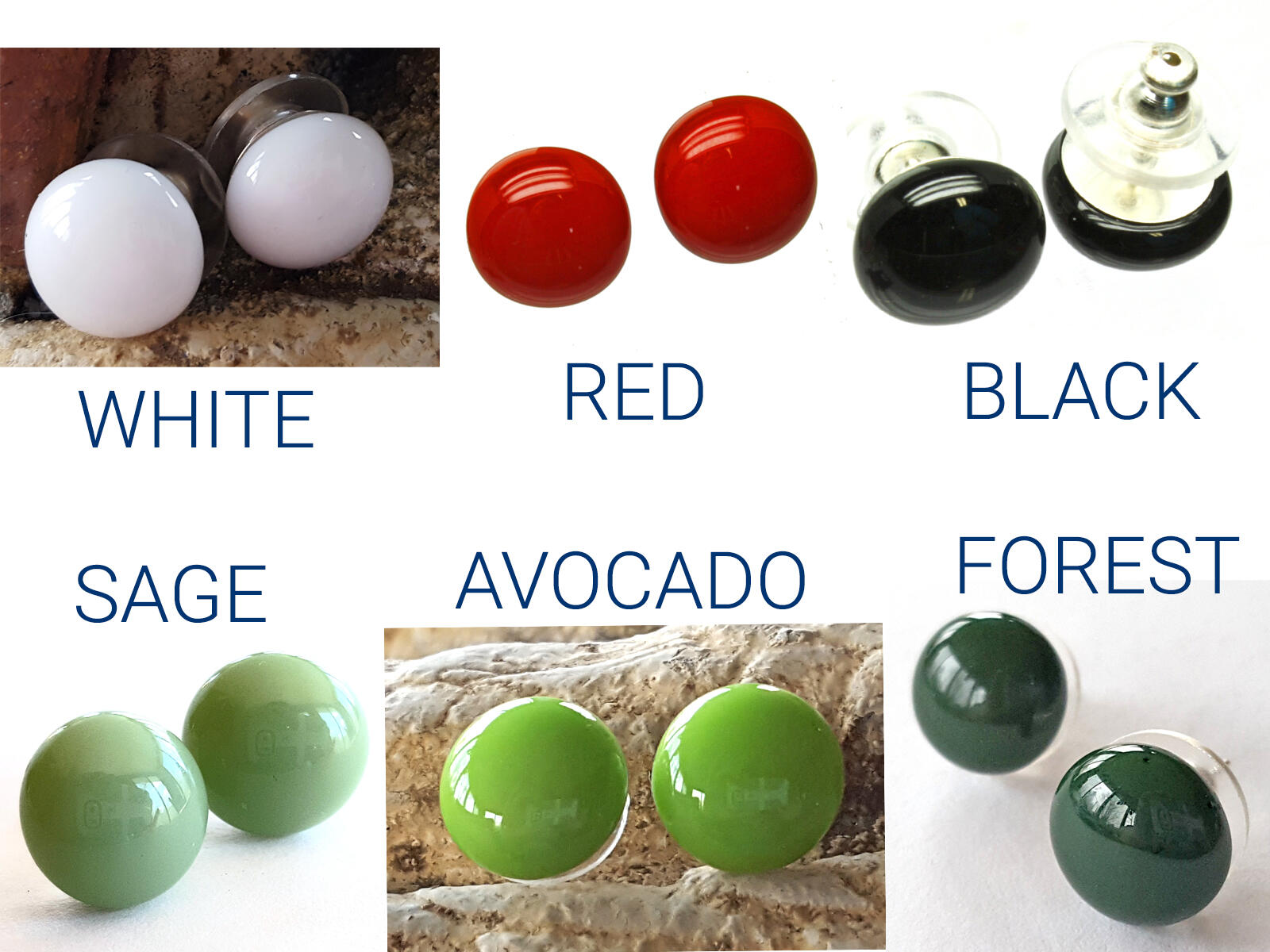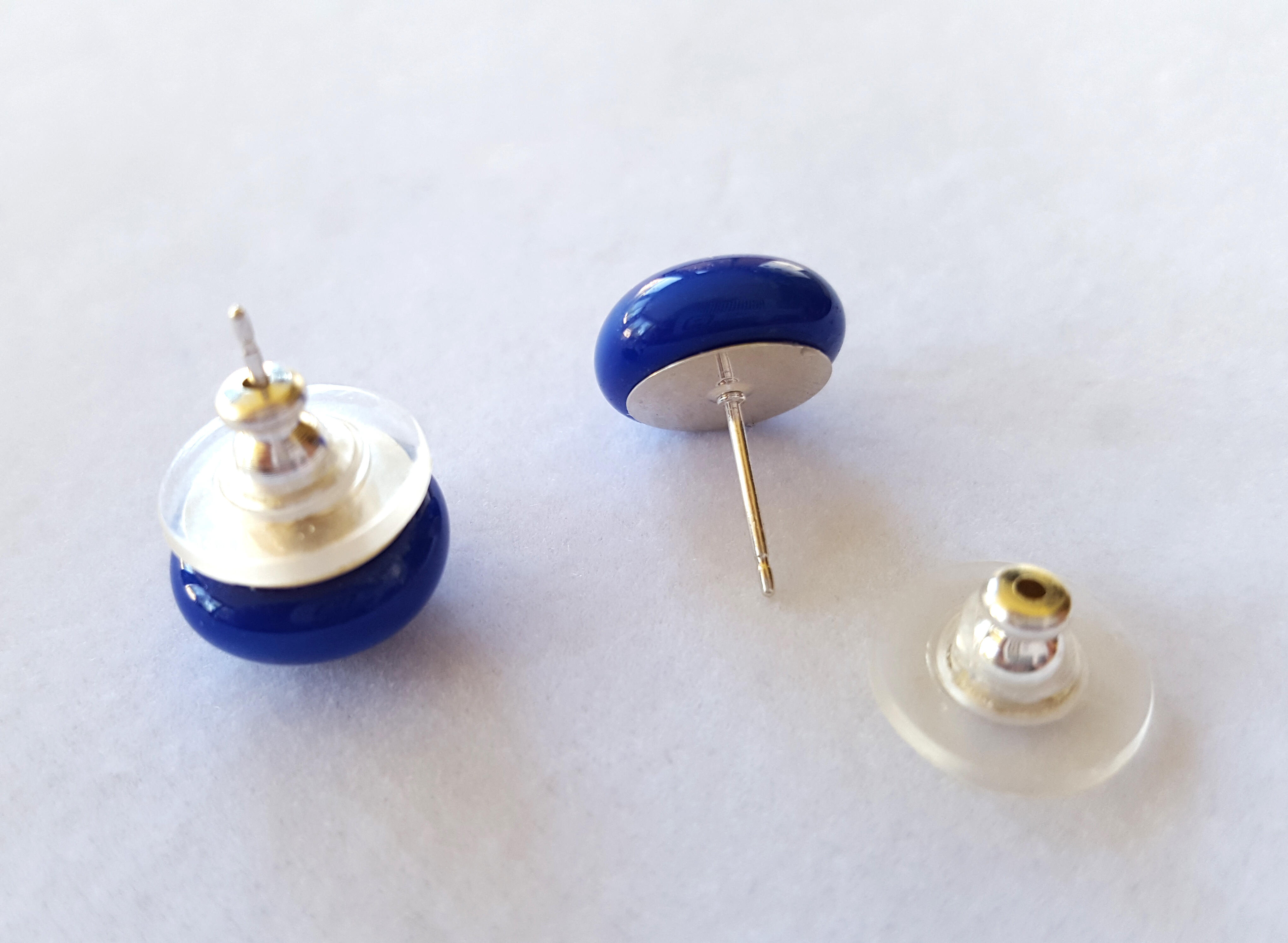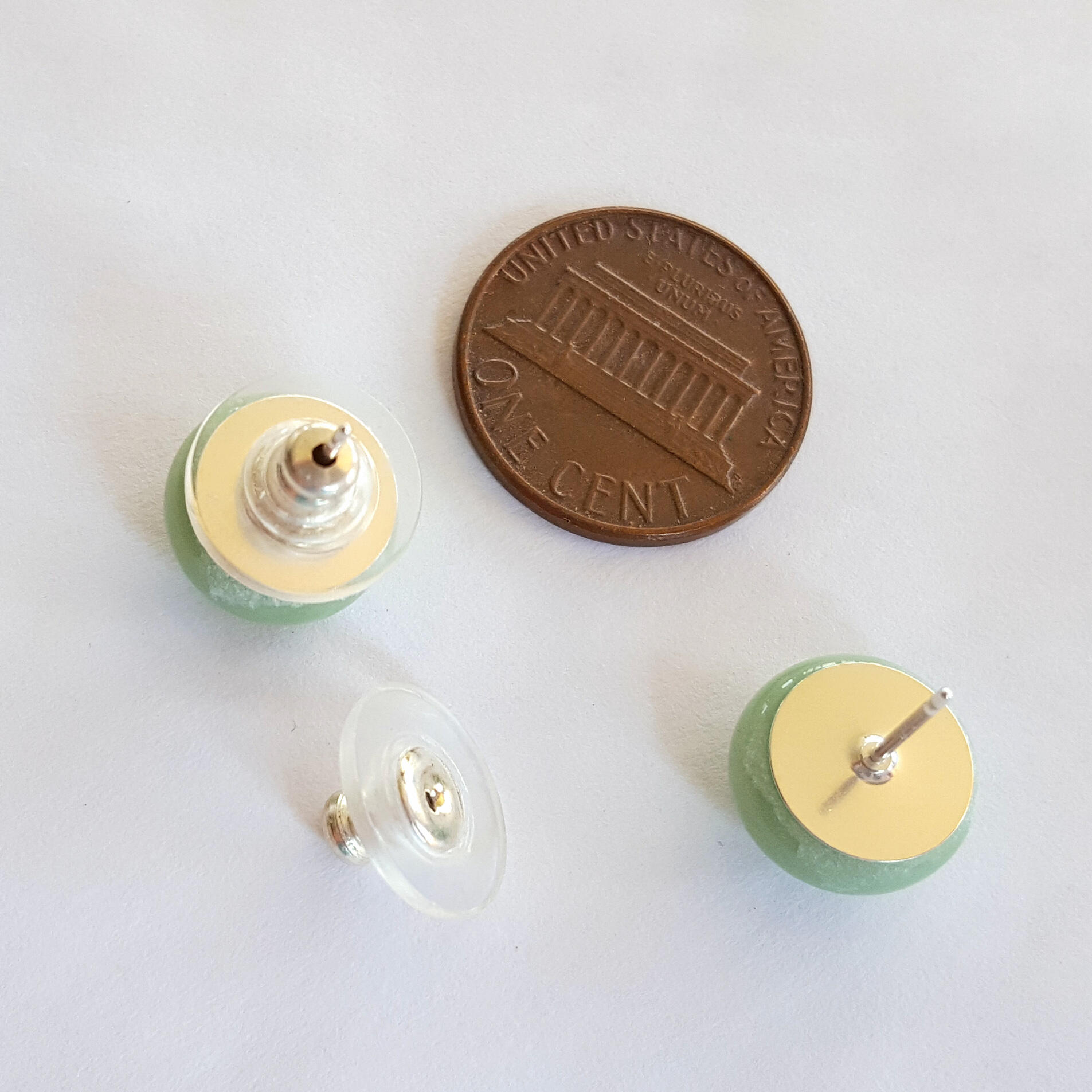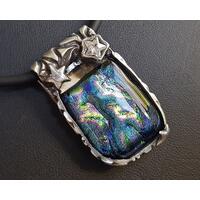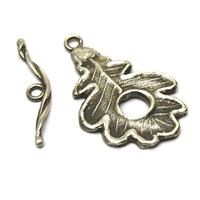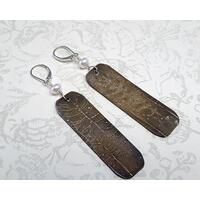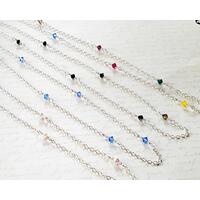About this Product
I make these earrings from fusible glass in the color of your choice. The posts are sterling silver, with a stabilizing comfort clutch back. Since I make each one individually, they will vary slightly in size, although I measure to make sure you get a matched pair.
These studs run from 11-12 mm in diameter (just under 1/2"), and weigh about 1.5 grams each including the comfort clutch (not too heavy.)
The hypo-allergenic comfort clutch back is actually aluminum embedded in surgical-grade PVC. I am not aware of anyone having an allergic reaction to them, but if you are concerned, I offer an upgrade to a sterling comfort clutch. It looks exactly the same, but with sterling silver instead of aluminum.
The model is wearing a white pair.
Shanghai Tai
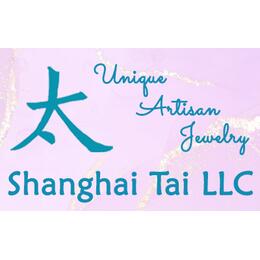
Meet the Maker
My name is Roxanne. I currently live in Northern Indiana, and also have a CPA practice where I specialize in business valuation and strategic advisory services. I moved here many years ago from Shanghai, China, which is where the inspiration for the name of my business came from, and also the inspiration for many of my designs (in addition to nature.) I brought lots of pearls when I moved here, so I learned how to make jewelry from them. One day I saw a shiny metallic-looking dichroic bead. Being the ADHD person that I am, I wanted to learn to make them. I accidentally took a fusing class instead of a lampwork class and I have been fusing ever since. Next, I discovered metal clay, which is clay made out of actual microscopic bits of metal: gold, silver, copper, bronze, and more. I later became certified in metal clay and bought a small jewelry kiln, which is how I make all my fused glass and metal clay components. In addition, I like to do wire wrapping, beading, and some basic metalsmithing.

How it’s Made
These start out as 1/2" squares of glass. When I fire them long enough at almost 1500 degrees F, they ball up. Since each is individually handmade, the size of each pair will vary slightly.
Shop Policies
RETURNS AND EXCHANGES
I gladly accept returns and exchanges
Contact me within 14 days of delivery
Ship items back within: 30 days of delivery
Items must be returned in the same condition that they arrived.
Cancellations
I can't accept cancellations on custom orders once work has begun, or on any order that has already been shipped. But please contact me if you have any problems with your order.
The following items can't be returned or exchanged
Because of the nature of these items, unless they arrive damaged or defective, I can't accept returns for:
- Custom or personalized orders
- Perishable products (like food or flowers)
- Digital downloads
- Intimate items (for health/hygiene reasons)
Returns and exchange details
Unless noted in the item description, items are returnable if you contact me within 14 days of receiving the item. Due to the nature of my products, certain wedding & special occasion sales are final or subject to a re-stocking charge, so please be sure before you buy. (These will be noted in the item description.) However, even if they are not normally returnable, if there is a problem with the item when you receive it, however, such as shipping damage or a defect, please let me know. I stand behind the quality of my work and want you to be happy with your purchase.
SHIPPING POLICIES
In-stock items normally ship within 2 business days after payment clears. Some items may be made to order and these will usually be noted in the item description. If there will be a delay I will contact you immediately. If shipping time is an issue, feel free to contact me and ask if it is in stock or how long it will take.
Shipping prices in the U.S. are for parcel post through the USPS, insured, with a tracking number. Currently, I am not shipping outside the United States.
ADDITIONAL POLICIES
MAILING LIST: When you make a purchase, I will assume that you would like to receive emails about any online specials and jewelry tips unless you tell me otherwise. When you receive your first email, there will be a link to change your preferences or unsubscribe, which you may do at any time.
ADDITIONAL INFO AND FAQs
Please contact me if you have any questions; I will be happy to answer them for you.
MATERIALS INFO
BEADALON is the trade name of possibly some of the strongest, highest quality beading wire available. The number 49 in "Beadalon 49" stands for 49 strands of steel. Seven strands are woven together, then seven of those strands are woven together for a total of 49 strands. It also comes in 19 strands (Beadalon 19) and 7 strands (Beadalon 7)
DICHROIC GLASS is a type of fuseable glass that has a layer of microscopic metals that reflect light. The "di" in dichroic means two, because it tends to reflect two different colors depending on the angle you view it from. The dichroic layer is part of the glass and will not wear off.
FUSED GLASS - I fuse the glass in my kiln at around 1500 degrees Fahrenheit. In order to fuse two pieces of glass together, they must have the same coefficient of expansion (COE), so it needs to be glass that has a known COE, rather than just any old glass. The glass is fairly thick and actually very sturdy. All the glass is properly annealed (cooled slowly in my kiln). This strengthens it and helps protect against breakage. FUSED GLASS that is glued to bails or chains will eventually come unglued after a few years. If this happens, you can easily glue them back on. Peel off any old glue residue and glue them back on using E6000 glue which is carried by many stores, including discount stores, craft stores, and probably hardware stores.
GOLD
GOLD-FILLED - In order for jewelry components to be labeled as "Gold filled" they must have at least 1/20, or 5% of their weight in actual gold. Gold plated, however, is not regulated, and normally is only a very thin (like 7 millionths of an inch) layer of gold. What this means is that when you buy gold-plated items, the gold will wear off. Gold-filled items are always a better value than gold-plated. They are an affordable alternative to solid gold. If you care for them properly (by not using harsh cleaners, etc.) gold-filled items should last a lifetime. Gold-filled is your best affordable alternative to solid gold
GOLD PLATED AND GOLD VERMEIL:
Gold vermeil is sterling silver with a layer of gold that is somewhere in between gold plated and gold-filled as follows:
Gold plated: 2 to 7 millionths of an inch
Heavy plated sterling: 40 millionths of an inch or up to 20 times more gold than gold plated
Gold vermeil: 100 millionths of an inch, or 2 1/2 times more gold than the heavy plated sterling and up to 50 times more gold than gold plated.
SOLID GOLD - pure gold is 24 karat. Any number less than that is an alloy. For example, 14K means 14 parts of gold and 10 parts of another metal, so it is 14/24 gold.
METAL CLAY is made of particles of metal, usually silver, that are mixed with an organic binder. After I make a piece it is thoroughly dried and sanded. Then fired in my kiln at anywhere from 1100-1600 degrees Fahrenheit. This burns out all the organic material and leaves only the metal. In the case of silver clay, what's left is fine silver, 99.9% silver content, as opposed to sterling silver which is 92.5% silver content. Although there is now a sterling silver clay, which would be 92.5%. The metal clays that I use consist mostly, if not entirely, of reclaimed metals.
PEARLS:
Pearls occur naturally when a foreign object, like a grain of sand, gets introduced into the shell of a living mollusk (an oyster or clam). The foreign object is irritating to the mollusk, so it coats the object with smooth nacre. There are two types of real pearls: freshwater and saltwater (or sea) pearls, depending on the type of mollusk that created the pearl. Sea pearls come from saltwater mollusks. They are round or close to round, sometimes a little pointy on one end. They can be white, silver, silvery/peacock, or even gold. South Sea pearls, gold South Sea pearls (Australian), and Tahitian pearls are all sea/saltwater pearls. Freshwater pearls come from mollusks that live in freshwater lakes. They are more affordable than sea pearls and come in all kinds of different shapes. Freshwater pearls naturally are white or peach colored -- if you see them in other colors they are either dyed or irradiated to give them those colors. If a pearl occurs all by itself without any help from man, it is a natural pearl. The overwhelming majority of pearls are cultured pearls. Cultured pearls come from pearl farms, where the mollusk has a little help when a person implants a "nucleus" (usually a tiny piece of shell) into the mollusk. The mollusk then begins to create a pearl, which usually resembles the shape of the nucleus. Whether natural or cultured, they are still genuine pearls.
UNDERSTANDING PEARL GRADES
(From Rio Grande Website)
AA-Grade--Available only in half-drilled pearls, these pearls are nearly blemish-free and present an excellent luster.
A-Grade--Pearl surfaces show a few insignificant blemishes. Their luster is good, exhibiting some depth.
A/B-Grade--Surface blemishes are seen easily. The pearl luster is moderate. This grade, though not perfect, is beautiful and offers the most economical value.
Akoya cultured pearls are traditional saltwater pearls originally only from Japan, though China now supplies them as well. Akoya pearls tend to be more valuable and display a greater luster than their freshwater counterparts.
Tahitian cultured pearls, originally cultivated from the black-lipped variety of the Pinctada maxima oyster found in the seas of French Polynesia, offer a dark, lustrous sheen ranging from black to graphite to metallic silver and rich with bluish, purple, and/or green overtones.
Cultured freshwater pearls are more economical and more readily available. The high-grade varieties of these pearls offer a luscious luster. Freshwater pearls can be found in numerous shapes that serve a wide range of jewelry designs.
SILVER:
ARGENTIUM STERLING SILVER - is an improvement over regular sterling. It has a slightly higher silver content, .93.5% compared to 92.5% for traditional sterling. The remaining metal consists of less copper and includes Germanium. Argentium doesn't tarnish as easily as regular sterling silver. It is also better tolerated by people who are sensitive to copper. For example, I personally cannot wear sterling ear wires but I can wear Argentium. In addition, Argentium is sustainable, because it is made with reclaimed silver.
FINE SILVER is 99.9% silver, so it is more expensive than sterling (or Argentium) silver, which is only 92.5%. It also doesn't tarnish as easily as sterling. It is softer, so not as practical for wire-wrapping or pieces that need strength (like rings).
NICKEL SILVER: not silver at all, but a base metal alloy containing nickel, copper and usually zinc but no actual silver. Named for its silver color. (I do not normally use this, here only for comparison)
SILVER PLATED: See gold plated - it's the same.
SILVER FILLED: See gold-filled, although silver-filled is often 10% silver rather than 5%.
STERLING SILVER: 92.5% silver, 7.5% other metals, usually copper. Sterling silver is stronger than fine silver.
TIBETAN SILVER: Base metal, typically iron coated in pewter with a silver plating. (I don't normally use this - here for comparison)

